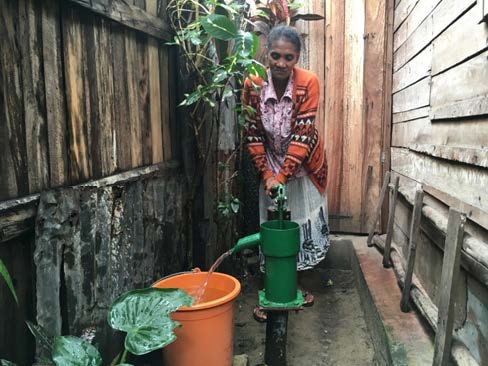Madagascar: Reducing Lead Exposures From Hand Pump Use


A pilot project is underway to reduce lead exposures among families in Eastern Madagascar by remediating lead-containing hand pump components.
In Madagascar, only 64% of urban dwellers have piped water on the premise (2015 data). Toamasina, located in eastern coastal Madagascar, has experienced rapid urbanization over the past decade. Thousands of households in coastal Madagascar either cannot afford piped utility water or are underserved by the utility’s service. Accordingly, a market has emerged for hand-driven wells affixed with a locally produced hand pump (referred to as Pompe Tany). This manual suction pump typically includes two check valves that contain lead (Pb) as well as a Pb-soldered brass screen that is inserted into the groundwater table. An estimated 9,000 of these systems exist in Toamasina.
Lead concentrations from pump water exceeds the World Health Organization (WHO) guideline of 10 μg/L (ppb). During a 2018 investigation of 504 pumps, we found that replacing the two lead pump components in each pump with iron components reduced lead concentrations below the drinking water guideline in 98% of the pumps (sample size = 418).
We have also estimated blood lead levels in Malagasy children ages 1-5 (before and after the pump intervention). After our pump intervention, 21% of children were found to move into the lower risk category of a BLL of 5 μg/dL or lower. We estimate opportunity costs associated with IQ loss from childhood lead exposure in these pump systems at US$ 11,700 dollars per child (a total of US$ 13 million for the whole childhood population associated with the 504 pumps).
Pure Earth’s long term goal is to improve the health of Malagasy who live in the Toamasina area by reducing lead exposure associated with water obtained from locally manufactured pitcher pump systems.
